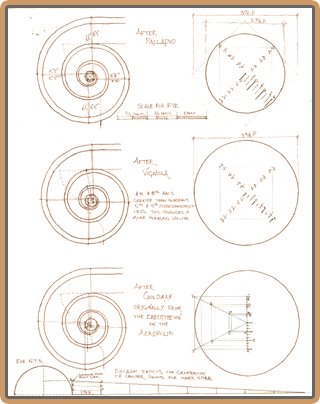Oh, that's a loaded title. Tolstoy tried it. And failed. So will I, if I even attempt some sort of scholarly endeavor.
But this is "Paronomasial Pensees", after all. So, I'll just jot down some thoughts, and perhaps sneak in a few wordplays. Perhaps I'll just figure out what I think art isn't. That's fine, too.
There are several ways to interpret the question "What is art?". The first would be: what disciplines are considered 'art' or perhaps 'fine art'? The answer to that contains some clearly defined areas, and some fairly complex, less agreed upon ones as well. What makes the cut as 'art'? Surely painting does, as does sculpture. Music is in there, and poetry. Dance and playwriting? OK. I'll agree. What about architecture? I think you know I would proudly include the best of architecture in 'fine art', but in all honesty, I shouldn't.
A second interpretation to the question would be: "What is art for?". This is to say, what is the purpose of art? This is an intriguing question. An interesting quality of art is that it acts as a barometer of the society in which it is produced, either because it represents the state of affairs of said society, or it intends to lead said society to another place than it is currently in. I suppose you could say that art either re-presents the created world, or re-creates the present world. Art takes us somewhere we normally cannot go, shouldn't go, or wouldn't go. Reading Homer brings us to the brink of war in our living room. Seeing Othello self-destruct helps us examine our own virtues and vices before it is too late. Contemplating before Fra Angelico's 'Crucifixion' brings us before the scene of all scenes, the act of all acts. It is for these reasons, and not merely to decorate our living rooms, that art is.
A third interpretation to the question would go something like: "What among the disciplines is to be considered art, and what is to be considered crap?". This is the question least often asked by arteests and never by artists, but most often by philosophers with no artistic talent to temper their tempestuous tempers. Actually, the distinction that is most often overlooked is the difference between 'art' and 'craft'. A crafty person puts materials together in new, and often spectacular ways. They create shiny objects that enthrall the intellectually inert. Most often accompanied by the reaction 'Wow! Thats really neat!', craft is never looked at for more than 15 seconds. Art, on the other hand, demands a high level of craft, but is not sufficiently determined by it. Art can be revisited every day for 20 years and still produce new and exciting emotions, thoughts, feelings, even physiological reactions. Splashes of paint in random order might take great understanding of color theory, and great skill with the material qualities of paint, but until it is arranged into a pattern that says something to the audience, it is not art. And I might add that merely saying anything is not enough. One must say big things. One must approach great truths. It must be beautiful. Art is beautiful, craft is splendiferous.
Art is the great mix between theory and practice. Without theory, the artist has nothing to say, no reason to act in his medium. Without practice, he has no means to say his great thought, and it is wasted.
Monday, September 8, 2008
Subscribe to:
Post Comments (Atom)



No comments:
Post a Comment